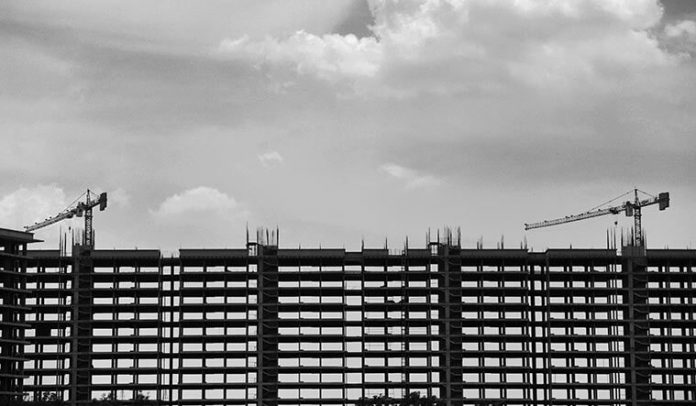This article has been written by Shivani. A. This article deals with the various provisions on the Tamil Nadu Apartment Ownership Act, 2022. It also sheds light on the history, objectives, important definitions, rights of the apartment owners, penalties, among other things. This article consists of an in-depth analysis of the Tamil Nadu Apartment Ownership Act, 2022.
It has been published by Rachit Garg.
Table of Contents
Introduction
In today’s era, when the apartment culture is prevalent throughout India, there are many problems faced by apartment owners. For instance, there are conflicts between the owners and the builders regarding the ownership of common areas and also regarding the authority that needs to be approached in order to resolve the conflicts between the owners. In order to provide an effective solution to all such problems faced by the people of Tamil Nadu, the Tamil Nadu Apartment Ownership Act, 2022, hereinafter referred to as the ‘Act’ was brought into effect by the government of Tamil Nadu.
The Tamil Nadu Apartment Ownership Act, 2022, is a new law that is enacted in order to protect the interests of apartment owners and to improve the administration and issue of ownership of common areas and facilities. On 15th December 2022, President Draupadi Murmu gave her assent in order to repeal and re-enact the Tamil Nadu Apartment Ownership Act, 1994.
History of Tamil Nadu Apartment Ownership Act, 2022
The people living in the urban areas of the country, especially in Madras, faced an acute shortage of land for housing purposes. This led to an enormous increase in the price of land, which could not be afforded by lower and middle income groups. Therefore, the need to construct multi-story houses for people of these groups became a necessity, and such need was also felt by the government. But the people dwelling in such settlements faced a problem, namely, the individual buyers couldn’t secure any effective mortgageable title to such apartments so as to enable them to raise loans under any scheme or from the financial institutions.
In order to provide solutions to the aforementioned problems and to make a uniform law regarding the ownership of undivided interest vested in the common areas and facilities as heritable and transferable immovable property, the state government introduced the “Tamil Nadu Apartment Ownership Bill” in the Legislative Assembly during the year 1981. This Bill was referred to a Joint Select Legislative Assembly, but it lapsed due to the dissolution of the State Legislative Assembly in November 1984. Hence, this Bill was reintroduced by the government with suitable modifications in 1994. This Bill was passed and was later enacted as the Tamil Nadu Apartment Ownership Act 1994.
One of the biggest issues with the Act enacted in 1994 was the difficulty in registering associations under the Act. There was no authority constituted for registration, and hence, the associations were being formed under the Tamil Nadu Co-operative Societies Act, 1961, or the Tamil Nadu Societies Registration Act, 1975. Also, another problem with the Act was the issue regarding the registration of the deed. Once a sale deed for the apartment and the proportionate undivided share of the land were registered in the owner’s name, he became the absolute owner of the property. Under Section 10(2) of the 1994 Act, the deed has to be filed with the competent authority, but no authority was notified. Hence, in order to rectify these problems, the Tamil Nadu Apartment Ownership Act, 2022, was finally brought into force in December 2022.
Purpose and objectives of Tamil Nadu Apartment Ownership Act, 2022
The main purpose of this Act is to eliminate the limitations present in the Tamil Nadu Ownership Act 1994 and to offer practical solutions to the existing problems pertaining to the said Act. Section 1 of the Act states that the Act applies to the entire state of Tamil Nadu and shall come into force on such date as the State Government, by notification, declares.
Also, Section 23 of the Act states that this Act is applicable to:
- All the owners of the apartment,
- Tenants of the apartment owners,
- Employees of the apartment owners or their tenants,
- Any other person who uses the property or any part of it to which this Act or even its by-laws or rules apply also comes under this Act.
Also, the apartment owners are supposed to follow all agreements, decisions, and determinations made by the association as per the provisions given in this Act or the bylaws.
Important definitions

Section 2 of the Act consists of various definitions, which are essential in order to understand the meaning of various terms in the same manner as intended by the legislature when drafting this Act. Some of the essential terms whose definition is important for understanding the Act are given below.
Apartment
The word ‘apartment’ is defined under Section 2(a) of the Act. This section, first of all, mentions the essentials for a property to be termed an ‘apartment’ and, secondly, discusses various other words that can be used to denote the term ‘apartment’. The essentials required to consider a property as an apartment are:
- It should be a separate and self-contained part of any property.
- It should include one or more rooms or enclosed spaces.
- The rooms can be located on one or more floors, or any part thereof, in a building.
- It can be used or intended to be used either for residential or commercial purposes.
The various words that can be used instead of the term ‘apartment’ are block, chamber, dwelling unit, flat, office, showroom, shop, premises, suite, tenement, unit, etc.
Carpet area
The term ‘carpet area’ has been defined under Section 2(h) of the Act. It states that the term ‘carpet area’ literally refers to the net usable floor area of an apartment and also the area covered by the internal partition walls of the apartment. However, some of the areas are excluded from the definition of the term. They are:
- the area covered by the external walls,
- areas under service shafts,
- verandah area and an open terrace area.
Common areas and facilities
Section 2(i) of the Act defines the term ‘common areas and facilities’. The common areas and facilities refer to those areas of a property that do not belong to a single person and whose ownership is shared among all the owners of the apartment.
It includes common apparatus used by all the owners, like:
- Staircase
- Lifts
- Emergency/ fire exits
- Common entry or exits
- Parks and play areas
- Basement and common storage areas
- Parking space
- The places which have been designated for the accommodation of persons who have been employed for the management of the property like watchmen, ward staff or other service personnel etc.
It also includes the common services used by the owners like:
- Electricity
- Gas
- Water and sanitation
- Air-conditioning
- Fans, compressors, ducts, etc.
Even though the Act has defined the meaning of the term ‘common area’, it is silent regarding the ownership of this area. This led to a conflict between the flat owners and the builder of the flat. It was held by the Madras High Court in the case of Abbotsbury Owners’ Association v. The Member Secretary (2014), “When a land is shown as a common area and is developed as a common amenity, it belongs to the flat owners of the building.”
Rights of owners
The term ‘apartment owners’ is defined under Section 2(c) of the Act. This section specifies two kinds of people who are considered to be ‘apartment owners’. The term includes:
- a person owning an apartment and
- a person who has taken an apartment on lease for a period of not less than thirty years.
The owners of the apartment have the following rights:
- Right to exclusive ownership and possession of an apartment [Section 3(1)]
Every apartment owner has the right to exclusive ownership and possession of his apartment. An apartment, along with its undivided interest in the common areas and facilities, is considered to be an immovable property that is heritable and transferable. However, this Act doesn’t allow the ownership of the common areas and facilities of any apartment to be diluted or partitioned in any sort of circumstance.
- Right to an undivided interest in common areas and facilities [Section 8(1)]
Every apartment owner has the same rights and interests with respect to the ownership and usage of common areas and facilities. However, it should be in proportion to the carpet area of his apartment to that of the total carpet area of the project. However, the undivided interest in the common areas and facilities shall not be separated from the apartment, or partitioned or divided under any circumstance.
However, all apartment owners are supposed to use these common areas for the purposes for which they are entitled without encroaching upon the rights of the other apartment owners. The work relating to the maintenance, repair, and replacement of the common areas and facilities will be carried out in accordance with the bylaws.
Formation of an association of apartment owners
Section 7 of the Act deals with the formation of an association of apartment owners. But, before understanding the formation of the association, it is important to understand the meaning of the term ‘association’. Section 2(e) of the Act defines the term ‘association’. It states that the term ‘association’ consists of apartment owners, who are competent to contract in their own name, and also that the association must be formed in accordance with the bylaws.
Also, Section 6 of the Act lists the contents that should be present in the by-laws. As per this section, the bylaws shall consist of the manner in which the association is to be formed, the election of the board members, the number of members constituting the board, the appointment and removal of members from the board, the powers and duties of the board, etc. After the bylaws are ready, they should be submitted as soon as possible to the competent authority, who shall register them.
Section 7 of the Act talks about the formation of an association of apartment owners. It states that an association of apartment owners can be formed by registering the bye-laws with the competent authority. Also, the association should abide by the bylaws so framed. Also, in the case of buildings that were in existence on the date of the commencement of this Act and have a single association for that building, such association will be considered as the association of that building.
In the case of Cosmo Towers Owners’ Association vs. Chennai Metropolitan Water Supply and Sewerage Board and Ors. (2009), the Petitioner AOA (Association of Apartment Owners) formed under the Act was not letting some apartment owners be a part of the AOA, Hon’ble Madras High Court while deciding the issue held that the “contention of the learned counsel for the petitioner is that the bylaws of the petitioner Association give discretion to the association to permit or not to permit any apartment owner to become a member, cannot be accepted as the same is contrary to the Act, rules and model by-laws and in view of the fact that only one society/association can be formed for an apartment and every apartment owner automatically becomes a member of that Society/association. Thus, the action of the petitioner association in not permitting respondents 3 and 4 to become members, who are also apartment owners of “Cosmo Towers,” is illegal and a statutory violation.”
Rights of association
Section 17 of the Act deals with the various rights of the association. As per this section, the association has the right to access any apartment during reasonable hours for maintenance, repair, or replacement of any of the facilities that are present there. It also has the right to make emergency repairs to prevent any damage to the common areas or facilities or to any other apartments.
Formation of a federation
Section 10 of the Act deals with the formation of a federation. But, before proceeding with the process of the formation of a federation, it is necessary to understand the meaning of the term ‘federation’. Section 2(o) of the Act states that ‘federation’ means the body formed by two or more societies or associations as per bylaws.
As per Section 10 of the Act, if a building has more than one project and has two or more associations of owners or societies, then such societies and associations shall come together to form a federation. In the case of a property consisting of more than one project, and there are two or more societies or associations on the property, then such societies or associations can come together to form a federation in order to maintain and manage the common areas and facilities. However, the federation should perform its functions as per the bylaws.
The federation should declare which parts of the apartment shall be considered common areas and shall also submit a declaration along with the prescribed fee and in the manner prescribed to the competent authority. The competent authority shall then conduct an inquiry to check if the activities and decisions of the federation were in line with the bylaws, and if they are satisfied, the authority will make an endorsement on the declaration and put its seal and signature on it. The authority will then return the declaration to the federation and retain a copy of it for record.
If the competent authority, on examination, finds that the declaration of the federation is against the Act, against the rules made, or against the bye-laws, it should return the declaration to the federation in order to rectify the defects in it and also issue directions to the federation to resubmit the same after the required changes and resubmit the same within a period of 30 days.
Penalties
- Penalty for Non-Compliance with bye-laws [Section 9]
Each apartment owner shall comply with the conditions and restrictions set forth in the bylaws. When an apartment owner doesn’t comply with any of the bylaws, action can be taken against him by the association or the apartment owner in the form of recovery of the sums due, damages or injunctive relief, or both.
- Penalty [Section 24]
If rules, orders, or directions issued under the Act or under the bylaws are not followed by the association of apartment owners, competent authorities or any other person, he shall be liable, on conviction, to pay a fine that may extend to one lakh rupees. In case, the person continues to contravene the rules, he shall be liable to pay an additional fine, which may extend to five hundred rupees for every day during which such contravention continues after the conviction.
Conclusion
The main object of enacting the Tamil Nadu Apartment Ownership Act, 2022, is to re-enact the Tamil Nadu Apartment Ownership Act 1994 and to provide effective solutions to the lacunae which were there in the previous Act. The new Act does solve some of the problems regarding the ownership of common areas and facilities, and exhaustive provisions regarding the same have been provided in the Act and have also been explained in the article. However, the Act fails to solve one of the major problems, i.e., constituting an authority exclusively for dealing with issues related to the Act. Though the Act mentions that a ‘competent authority’ shall be established, there is no information regarding who exactly this competent authority is, and the same has not been specified yet. The Act came into effect in December 2022, yet there is no information regarding the competent authority even after the passage of a year. Hence, it is high time that an authority be designated for the same. With the regulation of apartment living under the Apartment Ownership Act, it is time that the residents realise the usefulness of living together, shed their parochial attitude, and work for the betterment of living conditions for all.
Frequently Asked Questions (FAQs)
Is there any remedy available in the Act for people who are not satisfied with the decision of the competent authority?
If a person is not satisfied with the decision given by the competent authority, he may file an appeal against the order of the competent authority under sub-section (4) of section 4, sub-section (2) of section 5, and sub-section (4) of section 10 to such appellate authority which is specified by the government.
This appeal has to be filed by the person within a period of thirty days from the date on which the order is received by him. It is left to the discretion of the government to appoint as many appellate authorities as they feel like. However, the appellate authority has been conferred a discretionary power under the Act to admit any appeal after the period of 30 days if it is satisfied that the appellant had a sufficient cause that prevented him from filing the application for appeal on time.
Is the Act applicable to any state other than Tamil Nadu?
No, as per Section 1(2) of the Act, the Act extends to the entire state of Tamil Nadu. Hence, it is not applicable to any other state.
References
- https://www.newindianexpress.com/states/tamil-nadu/2022/mar/26/tn-law-pushes-for-redeveloping-old-apartments-single-owners-associations-2434364.html
- https://redlaw.in/association-of-apartment-owners-in-tamil-nadu/
- https://www.newindianexpress.com/states/tamil-nadu/2023/feb/01/common-area-belongs-to-flat-owners-not-buildermadras-high-court-2543212.html
- https://prsindia.org/files/bills_acts/acts_states/tamil-nadu/2022/ActNo44of2022TamilNadu.pdf
Students of Lawsikho courses regularly produce writing assignments and work on practical exercises as a part of their coursework and develop themselves in real-life practical skills.
LawSikho has created a telegram group for exchanging legal knowledge, referrals, and various opportunities. You can click on this link and join:
Follow us on Instagram and subscribe to our YouTube channel for more amazing legal content.
 Serato DJ Crack 2025Serato DJ PRO Crack
Serato DJ Crack 2025Serato DJ PRO Crack










 Allow notifications
Allow notifications



